“Significant congestion will exist in 2027 on the I-5 and I-205 study corridors, even with all the improvements listed in the Regional Transportation Plan.”
— from a report published by ODOT as part of their Value Pricing Feasibility Analysis
The ODOT Files is our attempt to keep you informed of stories from around the web that illustrate how our state transportation agency is falling down on the job.
The latest entry into the ODOT Files is a story by Dirk VanderHart published today in the Portland Mercury: A New Report Shows Highway Widening Won’t Solve Portland’s Congestion Woes.
The piece centers around ODOT’s Value Pricing Advisory Committee, a group of advocates, electeds, and transportation leaders tasked with determining whether or not we should toll highways — and if so, how exactly it should be implemented. The central tension here is that ODOT wants to build lots of new highways (including an expansion of I-5 through the Rose Quarter) and there’s increasing political and public demand to consider tolling them before — or instead of — building them.
Then there’s the fact that expanding highways does not relieve congestion. And based on the Mercury story, even ODOT’s own analysts are trying to tell them that:
… according to a firm hired by the Oregon Department of Transportation (ODOT), none of the dozen highway-widening projects that are currently being planned in and around Portland by state officials would be enough in coming years to stem the increasing congestion choking Portland highways.
“Baseline, significant congestion will exist in 2027 on the I-5 and I-205 study corridors, even with all the improvements” currently envisioned, reads a new analysis from Montreal-based engineering firm WSP. “This congestion impacts not only speed, but also the number of vehicles that the facility can accommodate, with consequential impacts upon quality of life, economic vitality, and vehicle emissions in the region.
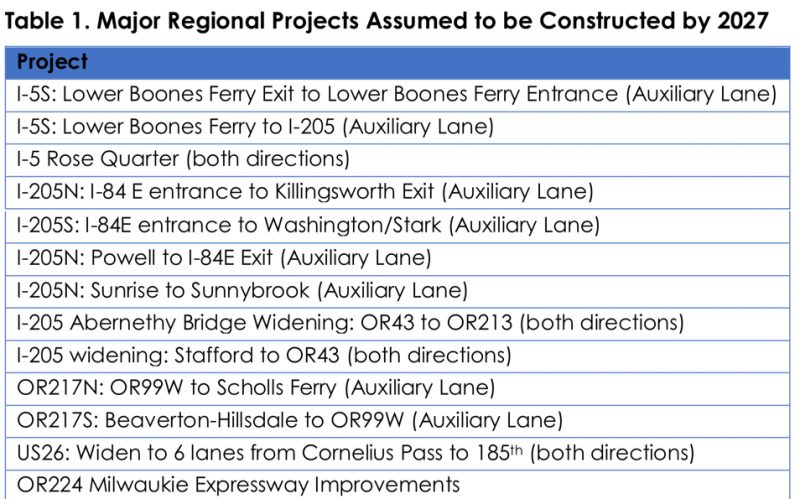
Take a closer look at the firm’s findings in the source document: Round 1 Concept Evaluation and Recommendations Technical Memorandum #3 (PDF).
Advertisement
And here’s VanderHart’s reporting on the growing calls to toll first, build later (or never):
Now some local leaders are asking a follow-up question. As officials study the concept of fighting congestion—and potentially curbing auto use—by tolling portions of I-5 and I-205, some want to know if tolls could aid commuters even without the state dropping billions on new highway lanes.
“What would be the impact of tolling all roads everywhere, assuming roads look like what they look like now?” Metro Councilor Craig Dirksen asked at a February 28 meeting of the state’s 25-member Value Pricing Advisory Committee, which is slated to recommend a scheme for tolling by the end of the year. “That’s a scenario that needs to be considered.”
“I think that’s a worthwhile look to have,” said another committee member, Multnomah County Commissioner Jessica Vega Pederson, a short while later.
Gerik Kransky, policy director for the active transportation advocacy group the Street Trust, also pushed the concept.
If ODOT follows their lead, Portland could get a sense of how tolling, by itself, could ease the city’s traffic woes. Anti-highway activists suggest such information would offer valuable context when deciding, say, whether a $450 million widening project makes sense.
The analysts hired by the state seem to bolster that point, saying tolling could have a meaningful impact without widening local highways.
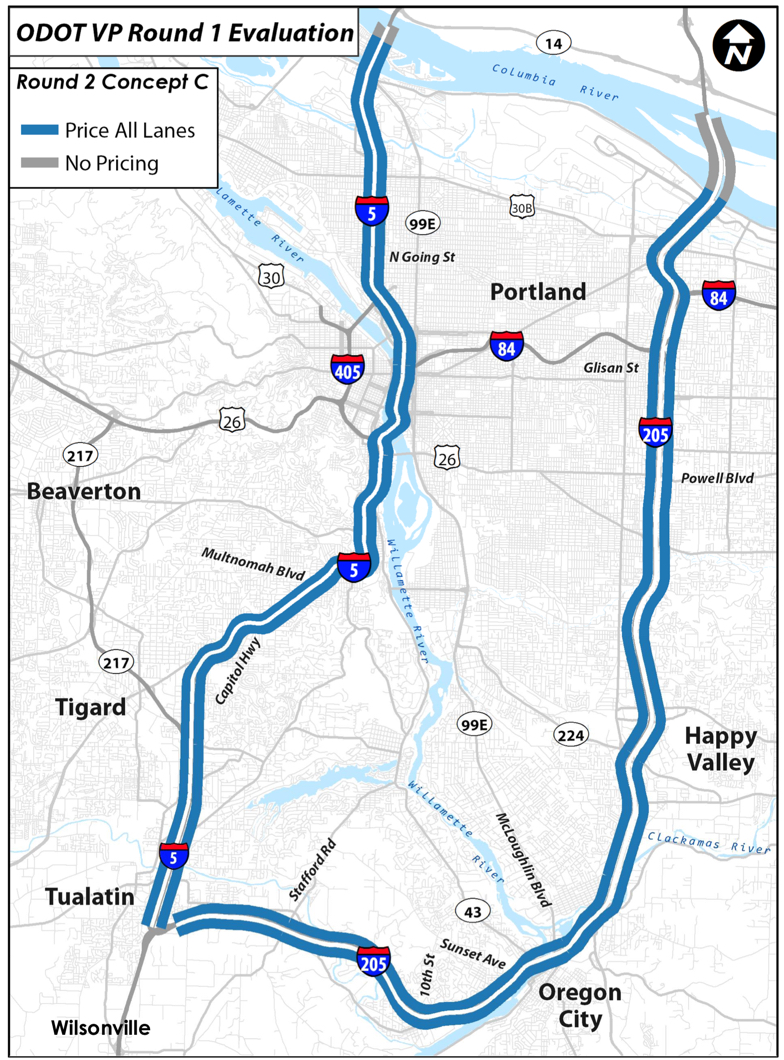
Specifically, one concept analyzed in the report is to price all lanes of I-5 and I-205 within the study corridors from the Washington border to the merge of I-5 and I-205. It got a glowing review:
This alternative provides significant congestion relief as it maximizes the ability to manage traffic efficiency on north-south freeways the length of the entire region. This alternative is likely to raise the most revenue that could be used to improve geometric conditions on area roadways, and could provide capital revenue for transit projects on the roadways, or other mitigation measures. Compared to the expense of adding new roadway lanes, this alternative is relatively inexpensive to implement. As described in the evaluation, the Priced Roadway – Toll All Lanes initial concept was the most effective at reducing congestion. It also would likely result in the highest net revenue. As such this concept may have the most opportunity for tolling during congested times of the day while providing the most funding toward mitigation strategies.
Read the Mercury story for more.
Previously, in the ODOT Files:
➤ Din from bypass has some neighbors on edge – 2/15/18 via The Newberg Graphic
➤ 97% of sidewalk ramps along Oregon highways violate ADA standards, survey finds – 2/16/18 via The Oregonian
➤ Our streets should be safe for everyone – Yes, even those who are under the influence– 2/28/18 via Strong Towns
— Jonathan Maus: (503) 706-8804, @jonathan_maus on Twitter and jonathan@bikeportland.org
Never miss a story. Sign-up for the daily BP Headlines email.
BikePortland needs your support.


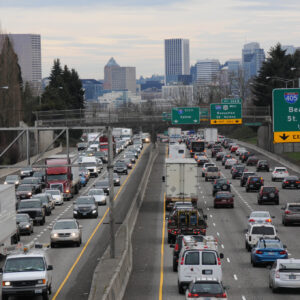
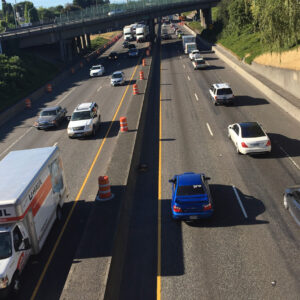

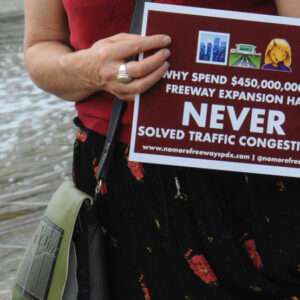
Thanks for reading.
BikePortland has served this community with independent community journalism since 2005. We rely on subscriptions from readers like you to survive. Your financial support is vital in keeping this valuable resource alive and well.
Please subscribe today to strengthen and expand our work.
ODOT may also come under fire for considering a project without a ‘do-nothing’ option as required with a formal Environmental Impact Statement and FHWA decongestion pricing rule. Good round up on this issue.
They do have a no-build option.
The PERS monster needs to be fed!
Is it true that toll revenues could be used for non-transportation-related purposes? Source?
Anyway, tolling seems like a clear win. Save hundreds of millions (billions?) in construction costs _and_ reduce congestion, while the costs are borne by those using the infrastructure. Only a tax and spend liberal wouldn’t like that!
Not directly, but it would free up money in other areas. If someone thinks that the multi-billion unfunded PERS liability doesn’t drive many of these big picture decisions, then they aren’t paying attention. It is the 800 lb gorilla in the room.
You have to get permissions from the fed to toll an existing interstate highway. You can do so for to add capacity OR for congestion management. You have to use the tolls on the facility- so, no, it cannot prop up PERS.
“The use of toll revenue is restricted under all of the Federal programs, and is generally limited to the repayment of financing for the project and for operations and maintenance. ”
Additionally, most transportation funding, including the Oregon’s gas tax have pretty strict sidegaurds about what they can be used for. For example, no transit. The biggest liability on ODOT’s books is not only its maintenance backlog, but obligations to repay on bonds they have taken out in previous decades. So tolling may help free up other ODOT budget for that, but again it’s still covering the huge backlog on transportation expenditures. PERS is certainly it’s own beast eating at general revenue budgets, but to try and tie it congestion pricing takes some disingenuous gymnastics.
If your position is that we should be using general funds to fund highway improvements, then I’m going to have to strongly disagree. PERS is a non-factor in this discussion, because we absolutely should not be using tax revenue from other sources to pay for urban interstates.
Given Trump’s “Infrastructure Plan” now has flipped the “local” share of hi-way project costs to 80% (20% Fed) from 20 / 80, I doubt any state will want to pull 80% out of the general fund or limited fuel tax funds…so tolls would seem to be the only near term option other than “no-build”…
Additionally, the use of tolling will need to be implemented none-the-less as a construction period capacity management tool for any interstate corridor widening work…this was one of the critical findings out of the CRC planning.
PS. I would be curious to hear from any attendees of the ODoT listening sessions on the Oregon side of the bridges. To compare notes from the Vancouver side meeting.
Freeway widening not addressing congestion?! ODOT has the answer for that. Unfortunately it’s the same answer as since 1950: build more capacity.
Tolled roads can still fill up to capacity.
That’s false. A functional toll system would adjust the price based on usage, as more and more cars get on the toll road, the toll will charge a higher fee to discourage more traffic from getting on.
It’s not false. I grew up next to a tollway and saw it happen regularly.
Nobody is going to set a toll high enough to make a lot of people stay at home.
And the option to that tolled road is surface streets. Do you want to drive that traffic off the hi-way into neighborhoods?
The toll amount would be too low, then.
tolling would be great as they’d have to staff toll booths which means they couldn’t staff every freeway on-ramp and they’d need to close several of them within the city… that would align better with Eisenhower’s interstate freeway concept which is currently abused with so many inner-city access points…
Modern tolling doesn’t use toll booths anymore. Sorry to burst your bubble.
how do you toll someone without a booth? self-serve drive-up atm style with an attendant? you can’t just mail a bill to the address on file, if you can even read the plate…
EZ Pass and cameras combined with automatic billing. At least with this system you know you’re being tracked.
“you can’t just mail a bill to the address”
Actually, that’s exactly what tolling systems do. Same system Oregon has in place for speed and red light cameras.
In Seattle, there are several toll roads. You go online, set up an account, fund it or link a credit card, and you get billed every time you drive through the tolling gantry. If you don’t set up the account beforehand (or within a very short period of time after passing a toll gantry) you pay an additional fee/fine. It is the responsibility of the registered owner of the vehicle to pay all tolls.
Yep, I received a number of toll bills in the mail for a car that I sold to an owner who moved to Washington and never registered it.
Google is your friend.
The Mass Pike no longer has toll booths, and no exits were closed.
turnpikes are optional… these 2 river crossings are not… if they bring the toll border into the mainland of Oregon more then they could use a modern pass system… there’s no other highway style auxiliary road to divert to so we end up dumping all the casual freeway traffic into a dense city… we already know that doesn’t work well…
If they did close some on-ramps it just might improve traffic flow on existing freeways.
State legislators and the governor pat themselves on the back for passing a huge transportation bill, but look the other way when the money is wasted or is used for projects that cause harm. Will the political apologists please tell me again why I should respect the sausage?
>>> Then there’s the fact that expanding highways does not relieve congestion. <<<
Is it also a fact that removing highway lanes does not create congestion?
yes.
Here’s a particularly memorable example:
https://en.wikipedia.org/wiki/Interstate_405_(California)#%22Carmageddon%22
The point most miss here is that the concept of demand elasticity can explain very nearly all of this.
More fun reading: http://www.vtpi.org/gentraf.pdf
Would it make sense to just close the highways and fix our congestion problems once and for all?
Now you’re talking!
I would love to see the myriad ways in which the law of unintended consequences would unfold.
Yes but you’d have to provide much-improved alternative transportation systems at the same time.
Why? All travel demand would be induced away. *Poof!*
Your point is well taken that there are limits to such things.
Yes, as there are with induced demand. The limits of these mechanisms are not generally acknowledged here.
ODOT did a horrible thing by making a freeway in Newberg.
Only $252 million!
Build it and they will come. Tear it down and they will go. Time to apply that rule to the Eastbank Freeway and Marquam Bridge.
Yep, rip those suckers out, relabel I-405 as I-5, relabel the current segment of I-5 through the Rose Quarter as the first mile of I-84, and toll them both. Done.
I’m all for anything but cars, but if I-5 and I-205 are tolled, don’t many cars just switch to 43, 99E, 99W, 26, Sandy, Foster and whatever else is free? Cars cut through if there is traffic won’t they do it if there is a toll, too?
Some cars will cut through, but many won’t. The through routes parallel to the freeways aren’t always very parallel (or very “through”, for that matter), especially for longer distance commuters.
I live off Sandy and agree that bypass traffic is already a problem in the morning/evening commutes, so I share your concern on that point. My dream (with or without tolling) would be for a road diet on Sandy with some of the current traffic lanes re-allocated for BRT and protected bike lanes.
And it becomes less of an issue if we get speed cameras installed on all major surface streets. You can cut-through at 30mph all you want.
Since they aren’t tolling east-west, it may be less of a problem. Local traffic might divert to MLK/82nd, etc, but if we toll at the bridges/border then you’re basically required to pay to enter the state and then there would be no point getting off the freeway because you’ve already been hit. For many others, it just wouldn’t be worth it to get on local streets for a long distance (thinking down in clackamas/Tigard).
One interesting, potentially unintended (positive) consequence is that a tolling scheme on both 1-5, I-205 bridges may really move the conversation forward about extending lightrail to Vancouver. A few Washington legislators have managed to kill it in previous eras, but introduction of this pricing may organize all those Clark County voters to raise hell to get better transit service so they have more alternatives to the toll.
This is another area where cycling and driving interests are not as far as either side presents it. Drivers want to get where they’re going quickly and efficiently. Cyclists want a safer and more pleasant riding experience.
Tolling not only helps manage traffic on the highways while providing a revenue stream for maintenance, but it also encourages reduction of driving in general and other forms of transit — which frees up other roads, parking spaces, etc. Everyone wins.
I take issue with your reference to a single 150lb person operating a 5,000lb steel box at high speeds as “efficient”.
Could there be different forms of efficiency, perhaps with tradeoffs among them?
If the number of cars that cut through now continue to do so at the same rate since there will still be drivers trying to avoid traffic and/or tolls and if all the other cars continue to stay on the highways, then how does the amount of congestion change?
If tolls come into being, do a significant enough number of people start biking, walking, carpooling, and public transporting? That would be great, but….
If there is congestion pricing, does that keep congestion down because people start leaving/returning from work at different times than now? Do people change their habits like that?
In my mind, tolling is about raising revenue and not easing congestion. People’s driving habits won’t change until they recognize a viable alternative for themselves personally. The cost of tolls won’t be enough. The public won’t allow and/or the people who decide won’t have the nerve to set the fee high enough to feel the pinch enough to change driving habits. The draw of sitting in your car, listening to what you want to listen to, with your drink holders, with your breakfast spread out, departing when you are ready to go will continue to be too great for many.
Still, if the revenue gets put to use making our streets and transportation better for all, then that is a good thing. I have no problem with making driving as expensive as possible as long at it is invested in alternatives for everyone.
Cities we read about in Europe that have congestion pricing and have seen the benefit or cities that are banning cars from downtown all have the alternatives in place. I’m not sure that the good folks of Portland, beyond the readers of this blog, see the same viable alternatives here. Congestion will continue. Again, that’s fine if it is building pedestrian, bike, and transit options along the way.
What if they taxed the crud out of anything having to do with parking? Does that serve the same purpose with out the need to build out a tolling system?
“If tolls come into being, do a significant enough number of people start biking, walking, carpooling, and public transporting?”
Let’s make it happen, eh? I mean why bother with this sort of thing at all if we can’t accomplish those sensible goals? Let’s hold our elected officials accountable!
“If there is congestion pricing, does that keep congestion down because people start leaving/returning from work at different times than now? Do people change their habits like that?”
As others have stated, this is a function of the elasticity of demand for driving, which itself is manifest in a differential response to tolls set at different levels. I suspect we would all agree that there is a level at which those behavioral changes come about.
“In my mind, tolling is about raising revenue and not easing congestion.”
We in the US seem to have a conception of government’s role that maps onto that statement. We get worked up about the *costs* and never get around to recognizing or demanding the *benefits* that could/should follow. This is a huge shortcoming of our debates on this subject.
“People’s driving habits won’t change until they recognize a viable alternative for themselves personally.”
This is not an either/or thing. Different people have different elasticities w/r/t the cost of driving. And the alternatives are themselves often a function of how the proceeds are spent, how believable our representatives make the case for this, etc.
“The cost of tolls won’t be enough. The public won’t allow and/or the people who decide won’t have the nerve to set the fee high enough to feel the pinch enough to change driving habits.”
It would be helpful if you cited specific examples. My hunch is that there are places where the tolls have been set high enough to actually solve the problem. London and its congestion pricing efforts come to mind.
http://www.bbc.com/news/uk-england-london-21451245
“Use of Revenues from Pricing
Congestion pricing can generate substantial revenues from tolls. A portion of the revenues generated will be needed to operate the toll collection and traffic management systems. Net revenues after payment of operating costs can be used to pay for expansion of roadway facilities, to support alternatives to driving alone such as public transit, to address impacts on low-income individuals by providing toll discounts or credits, or to reduce other taxes that motorists pay for highways such as fuel taxes, vehicle registration fees or sales taxes.”
Revenue can be used for other things like public transit and bikeways. This is a recent major policy change with FHWA. Previous comments are outdated, which is why we are having this conversation.
Congestion pricing is different from rolling. Major policy change at federal level and therefore revenue can be used for public transit, bicycling and soft programs like Safe Routes.
“Congestion pricing is different from rolling.”
Say more.
I mean I get that they are not identical, but they also strike me as close kin. Mechanisms for pricing driving in previously unpriced locations with goals that also seem similar (traffic management, internalizing externalities, revenue generation).
What is the difference between the two? Guess: tolling is the same for all drivers all the time. Congestion pricing only happens when demand is up. Both are determined through the same tolling-type infrastructure (EZ Pass and cameras combined with automatic billing.). Is that correct? Did I win?
Tolls on the Columbia River bridges could pay for seismic upgrades for the I-5 spans, improved bike/ped facilities, and for a new arterial bridge…MLK to downtown Vancouver…with dedicated transit lanes for BRT or LRT.
The ODOT Files! Thanks for the reporting, Jonathan.